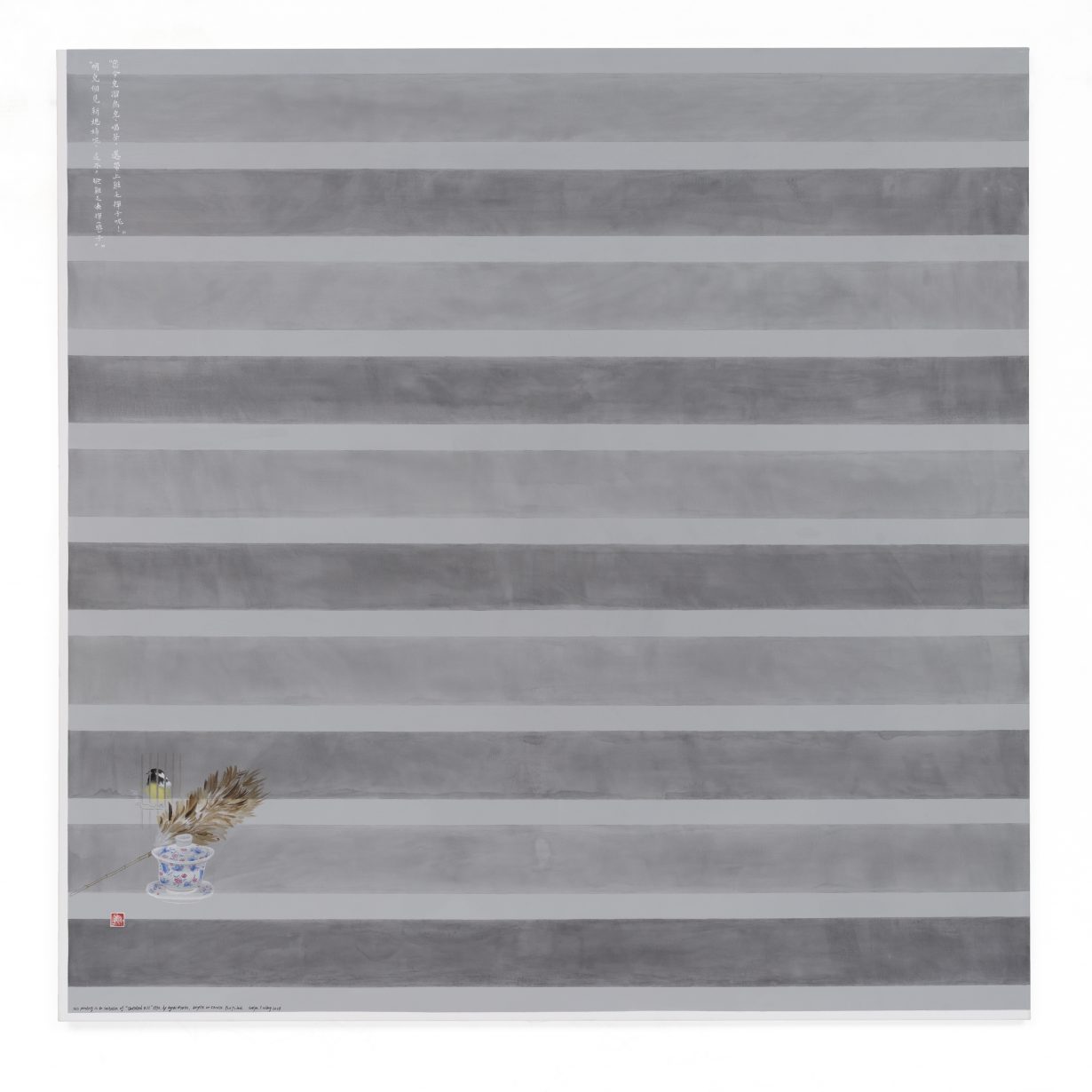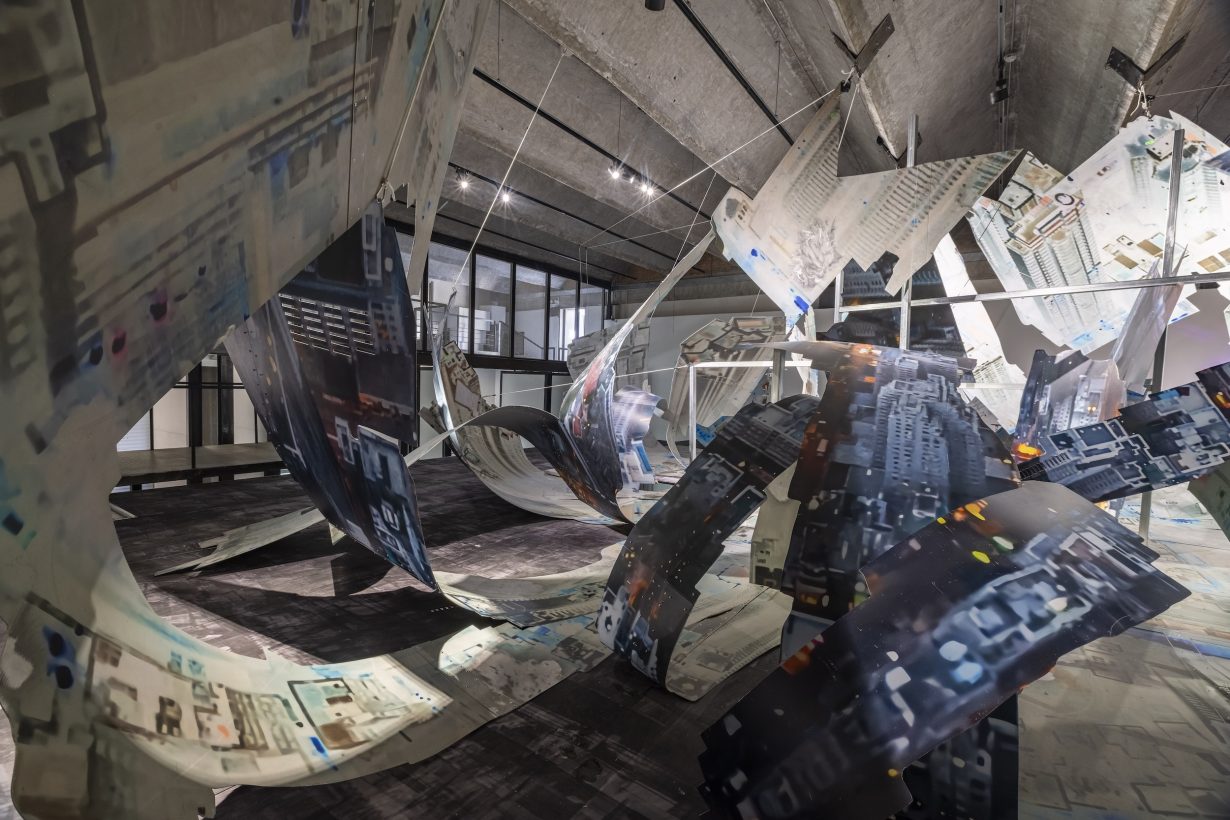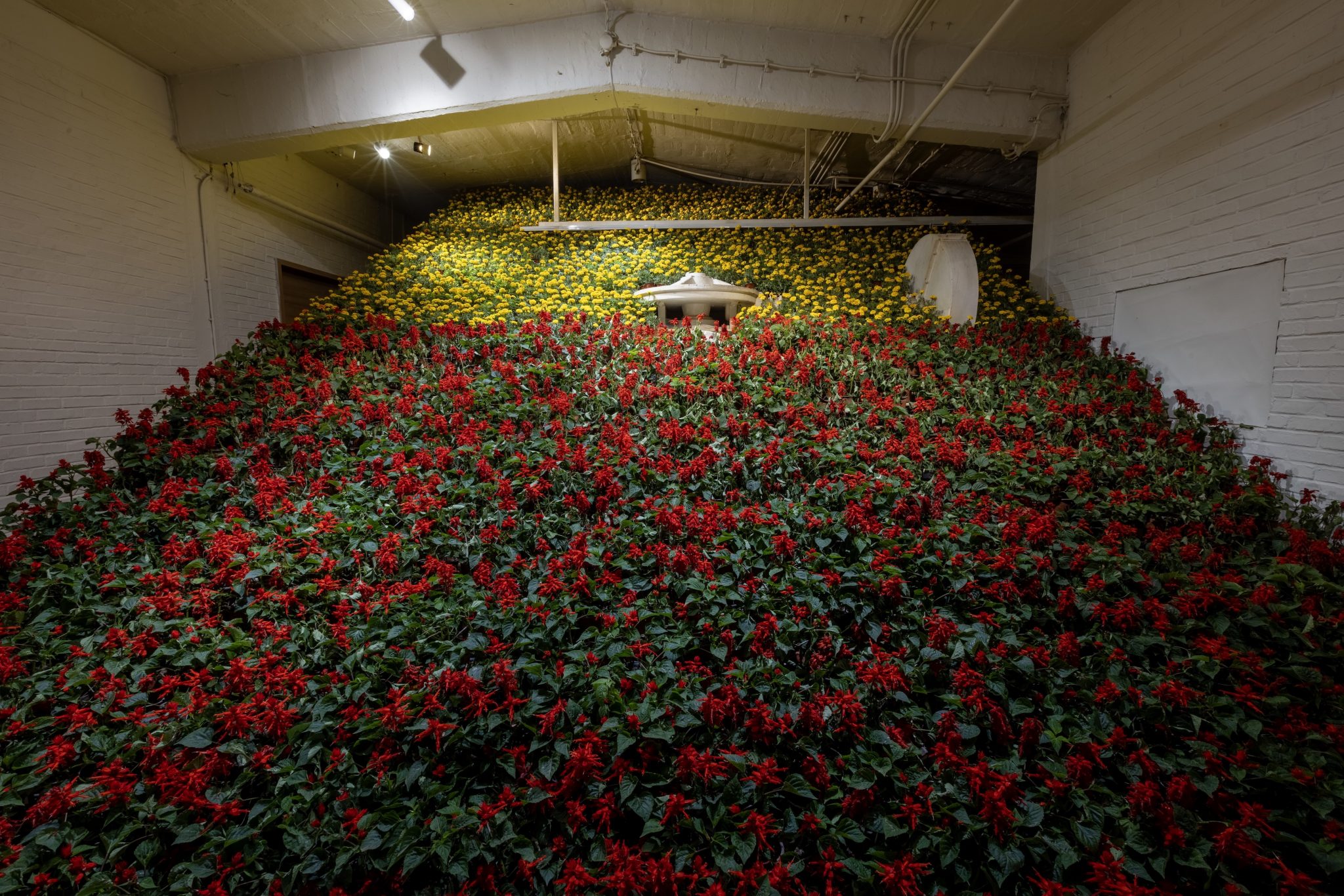What if an art weekend were to, finally, prioritise quality over hype?
For its ninth edition, Gallery Weekend Beijing (GWBJ) has been recast as part of ‘Beijing Art Season’. But despite two art fairs and numerous private collections and institutions joining in the fun, ‘the season’ feels rather quiet, skipping the pompous press conferences, fancy opening dinners, posters claiming to be the ‘The Global Art Destination’, and dropping what used to be GWBJ staples – a curated group show and a Condo-like section hosting visiting galleries. The process for selecting participating galleries, too, has shifted from pay-to-enter to invitation-only. The result is an event that has finally decided to prioritise quality over hype.
Like its previous editions, the majority of galleries are showing Chinese artists, reflective of an ecology in Beijing that’s more domestically grounded – this year the strategy seems particularly obvious, without visiting galleries bringing in artists from a broader geographic background. Spurs Gallery’s presentation of the work of Nguyễn Trinh Thi stands out from the general absence of an international voice. The Vietnamese artist’s three-channel film installation 47 Days, Sound-Less (2024) takes over the ground floor of the gallery’s space in the 798 Art Zone. Two opposing screens pastiche a traveller’s meander through dreams and reality, while oval mirrors, installed beneath a third projector, bounce vistas of foliage onto the gallery walls. These scenes of tropical flora are gleaned from the margins of commercial Vietnamese and American films, in which nature is reduced to a backdrop for dramas and morality plays. Without a dominating narrative or audiovisual focus, Nguyễn’s work is a gentle challenge to how screen culture conditions the way we see and listen, to how we prioritise singular, overarching messages over the ambient and the expansive.

One block down from Spurs, Evelyn Taocheng Wang’s work, in a two-person show with Cheng Xinyi – staged in a temporary space by Shanghai gallery Antenna Space – echoes Nguyễn’s attention to the peripheral. In Wang’s new series of paintings dedicated to Agnes Martin, the American’s evenly gridded surfaces are reproduced on linen or silk, with calligraphed colophons and seals on the edges that make them look like letterpapers typical of China’s Republican era (1912–49), which were often decorated with illustrated marginalia. To Walk Bird, Gaiwan-teaset… (2025), for example, uses the horizontal blocks of greys from Martin’s 1964 The Tree as ruled lines, its one corner embellished with a birdcage, a tea set and a feather duster – all symbols of the era’s urban-gentry life. These paintings are a careful study of Martin’s soft colours and edges, as well as of printed matter from China’s bourgeois past, showing us how, apart from what a letter may say, backgrounds and marginalia themselves are ways of fashioning one’s identity and sophistication. At Tabula Rasa, Tant Yunshu Zhong’s 30cm-tall sculptures require one to get down to the floor in order to notice the soft, undulating forms and calculated tilts and curves. Delicately assembled from pieces of string, brushes and rubber, they look like microbes with synapses and cilia that form a pulsing, billowing whole. In these shows, the work on view champions a slowness of seeing – one that allows one’s attention to drift and land, if at all, on places otherwise unnoticed.

In a shrinking economy and politically repressive environment, many exhibitions this year seem to have pivoted towards ‘good taste’, indulging the audience with refined, visually interesting paintings with pretty colours – such as Skyler Chen at Platform China and Li Shurui at White Space. The occasional engagement with politics, too, tends to play with formal nuances while sidelining subject matter. Included in Tan Yingjie’s solo show at Wind H Art Center, The Past Things (2025) is a series of sculptures made of sheet aluminium. In one, strips of steel are cut to create the outlines of queueing crowds depicted in various photographs he found online, taken during the country’s COVID lockdown, a (definitely subtle) way of nodding to the pressures of that era without showing the imagery itself. In another, cutout stock pictures of highways are warped and wrapped into a spherical maze, referencing, we’re told, the tragic 2022 Guizhou bus crash, in which 27 people died while being sent to a distant quarantine facility. Each staged under a single spotlight, they may easily pass as a constructivist assemblage. But there’s a pessimism in the artist’s aestheticised and abstracted rendering of urban spaces – his attention given to the geometric forms and shapes seems rather fetishistic, and his task Sisyphean, while the audience is left with just empty roads. There’s a wider sense that expressing one’s opinion is no longer a fashionable way of engaging with social issues and concerns. In this context, Wang Xingwei’s ironic paintings at Galerie Urs Meile – which camouflage critiques in humour and cynicism – seemed out of place. Trained under the era of socialist realism and political pop, the artist mounted works like the seven-metre-wide Chinese Soccer Fans (2024) which shows Chinese football fans celebrating a World Cup victory. Painted in the style of Cultural Revolution posters, the work brims with the nationalist frenzy football easily generates. But amid all the abstract, introspective works and their sophisticated vagueness, Wang’s frenetic reds and yellows are out of keeping with today’s trend of tucking one’s grudge beneath artful surfaces.

Two of my personal favourites were Liu Cong at Reflexion and Ma Qiusha at Caijin Space. At Reflexion, a gallery established in 2024, Liu’s solo exhibition comprises 12 hyperrealistic oil paintings of books and folders lying open against plain backgrounds, which look at once like still lifes and abstract, geometric silhouettes. In the torso-sized Paper – Yellow No.2 (2023), an open document-album shows empty plastic sleeves inside. Where the folios curve near the binding, their plastic surface picks up tinges of yellow from the background and refracts pale notes of fluorescent blues – it’s a masterful rendition of light that gives it the illusion of volume. While a folder’s primary function is to collect and display, Liu’s open pages stubbornly withhold information. The resulting exhibition harbours a subtle, brooding sensation, with the open, empty books reading like an attempted but failed utterance or a silent stutter.

Ma’s exhibition, by contrast, gives silence its shape. Titled A Young Man, it’s perhaps an endeavour to reanimate the artist’s memories of her actor-grandfather Ma Chao, who passed away during her early adulthood. In the multichannel video Thirty Years (2025), a series of old black-and-white film stills featuring Ma Chao are animated in short AI-generated footage in which all characters exit the frames. Displayed side by side on palm-sized screens, scenes of Soviet leaders or revolutionary soldiers guiding each other out of meeting rooms or marching off the battlefields mock not just the plot, but also these scenes’ imagined historical weight. In the audio installation Ma Chao (2020–23), a voice actor reads the grandfather’s unpublished memoir in an old-fashioned radio-novella tone, transporting the gallery to what feels like an idle, sultry afternoon during the 1980s, when Ma Chao worked on some of his last films before the country opened up and foreign productions and non-socialist works flooded in. But amid the nostalgic soundscape and printed matter, it is the installation Salvia splendens and Tagetes erecta (2025) that overshadow the rest. In it, bleachers reaching to the ceiling are filled with plastic pots of the titular flowers, often found decorating China’s public spaces during National Day-type celebrations. The show opened in early May. By the time I was there, most of what would have been bright red and yellow petals had withered; only the scent of dried leaves and soil remained. The work becomes a site where a kind of monumentality is anchored in the process of ruination. Ma’s show gives texture to the way time passes, and the ebbs and flows of memories that fade as they are being recovered.
Gallery Weekend Beijing, 23 May–1 June
From the Summer 2025 issue of ArtReview Asia – get your copy.
